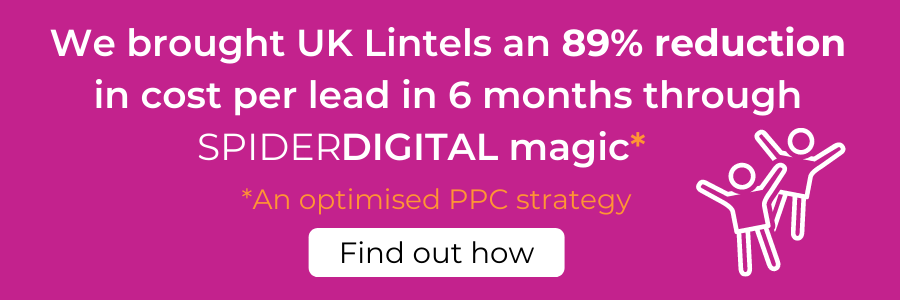PPC, otherwise named Pay Per Click, is an online advertising format which gets your business out there instantly. PPC is great if you want to increase your online presence and find new customers, fast.
How does PPC work?
PPC is most commonly used in Google AdWords and Bing, but also refers to social advertising such as Facebook, Instagram, Twitter and LinkedIn (for more, take a look at our post on what types of PPC there are). With PPC, you create your advert in the correct interface, set a budget and determine where and when you want it to show.
Should PPC be in my marketing strategy?
Marketing strategies should incorporate a wide variety of tasks and techniques for best effect, and PPC is an excellent tool to add to your bow. We're very into content and inbound marketing, but this is a strategy that can take some time to build up. If you want to get traffic to your site quickly, or you need a brand awareness boost, PPC is the best starting point.
PPC is ideal for companies looking for a quick win, to boost traffic and leads. Having the stats at your fingertips enables you to hone in on the parts of your business that are driving sales to constantly improve your ROI, while keeping expenditure down. Of course, it does require some creative flair for really targeted ad copy, and a keen eye for numbers to really optimise it to its full potential.
As your SEO, inbound, and other marketing strategies start to bring in more leads of their own, you can start to reduce your PPC spend accordingly - if you want to. If the campaigns are generating significant leads or customers, then why not keep it going? As long as you're getting a return, there's no reason to get rid of the channel, unless you want to reinvest that money elsewhere. Time will tell which approach works best for you.
So, how do you get the most out of your PPC strategy?
Define your audience
Depending on which type of advertising you choose, you'll have different options to create the relevant audience.
In Google or Bing ads, for example, you generally focus on keywords that people are already searching for - so you already know they're interested in what you're offering. You should investigate what people are searching for, what terms they use, what your competition is saying, and how big an audience the keywords relate to.
In social ads, you're more proactive than reactive. Instead of waiting for people to search for your content, you push it out to them. So, you want to spend some time thinking about your audience parameters. On Facebook, you can target people by their interests, by the pages they already follow, and by demographic information, as well as life events that they may have posted about, like getting engaged or buying a house.
On LinkedIn, there's more of a professional focus, so you'll be targeting by things like job title, company size, professional affiliations, time in post, education, and so on. You can even go as far as to target people in specific companies.
Defining your audience is key to successful PPC and social advertising - you want to spend your budget on the audience that is most likely to convert.
Choose your format
Even within the different social platforms, there are still plenty of different choices to make. Will you use a single image, a carousel of images, a video ad? It's always worth testing different options to see what has the biggest ROAS (that's Return on Ad Spend).
On Google Ads, you also have various options - text ads, display ads, responsive ads... If you sell anything, Google Shopping Ads are a great option to get your products front and centre when someone is looking for them (or something similar to them).
Control your advertising
You have complete control of your PPC budget, so you only put into it what you can afford. Plus, once you’ve set it all up, you can turn it off and on at the touch of a button. PPC is all about controlled advertising, that you can monitor and change as you wish. You can see all the stats so you can determine what’s working and what’s not, to improve your return on investment.
You can create new ads at any time, so you can start testing different copy, different images, and different ad styles to see what resonates best with your audience. Keep track of any changes you've made, so you can compare the data accurately. Test different audiences, too, as you might find something interesting.
Include retargeting
One further area you should consider for PPC, is including retargeting audiences - you can do this across all platforms. Essentially, a cookie recognises when someone has visited your website, and serves them more ads. You've probably seen this happen - you were looking at a gadget on one website, and that seems to pop up everywhere for the next few days.
Retargeting is a great way to reengage people who might have previously been interested in something but got distracted or forgot. It's a quick reminder that gets them to come back and, hopefully, complete the conversion.
If PPC sounds like something you’re missing, get in touch with SpiderGroup. We have a team of certified PPC experts in Bristol that can set up your campaigns and continually improve them so you make the most out of your budget.


